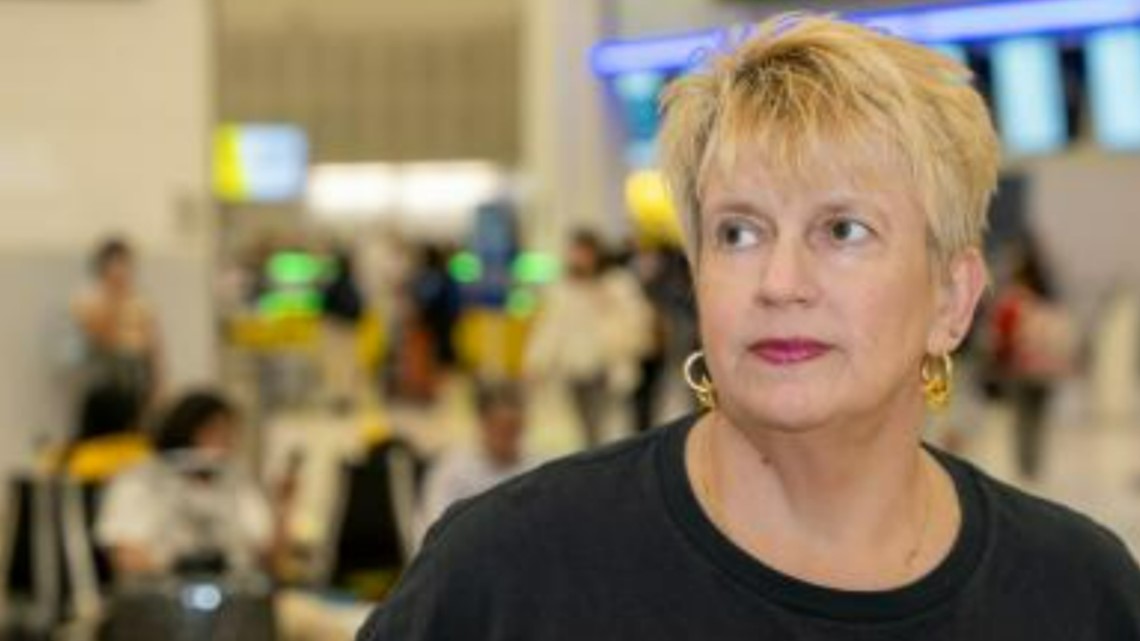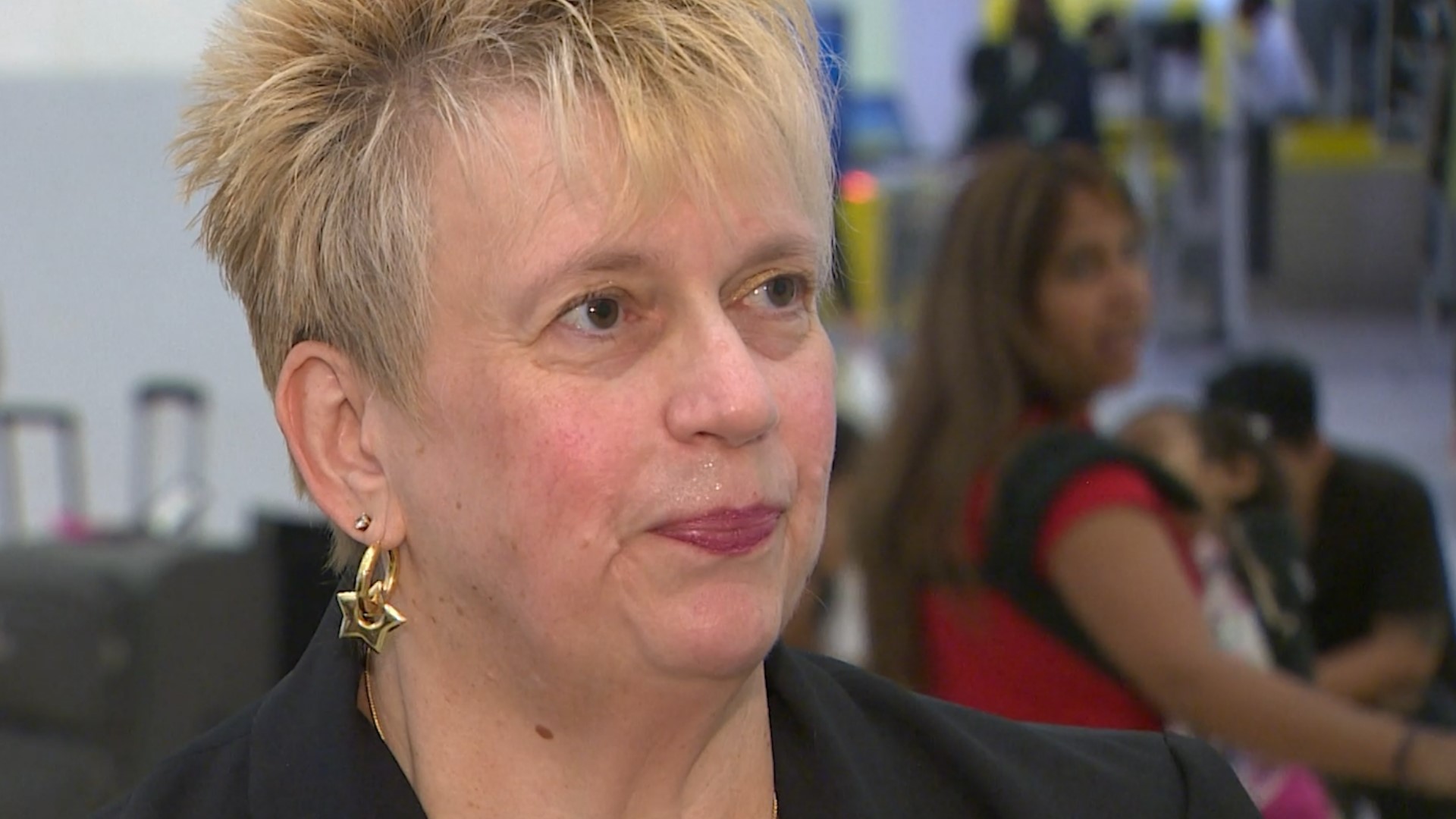HOUSTON — A veteran aviation worker who is trained on what to look for when it comes to human trafficking spotted several red flags that led to the rescue of a victim at Bush Intercontinental Airport.
Monica Phillips is responsible for security and information for Houston Airports and is trained in working with all types of people in various aviation scenarios.
Part of her job is answering phone calls from customers.
“Friday, June 2, I took a call from a man who claimed he was looking for his 52-year-old mother,” Phillips said. “He said that his mother had boarded a flight in Lubbock, Texas bound for Houston on Sunday, May 28. And that he hadn’t heard from her.”
Phillips said that was the first red flag about the situation that she spotted. She wondered why the caller waited five days before to call the airport about his mother.
Phillips then transferred the call to the Houston Police Department. Later, she followed up with HPD who told her that the caller refused to file a missing persons report, which was another red flag.
“I knew something wasn’t right about his story,” Phillips said. “I had this gut feeling that this was a case of human trafficking.”


On June 7, Phillips said she arrived at work early. As she crossed the ticketing lobby of Terminal A at Bush Airport, she spotted a woman who was struggling to communicate with Houston police.
Phillips said she had a gut feeling it was the woman the caller had been searching for earlier in the month.
Phillips said the woman only spoke Hungarian and was struggling to communicate with police. Phillips used translation technology and asked if the woman’s name was the same as the one used by the caller from before.
The woman told her yes, but she did not recognize the name of the caller.
Since the man had called the airport, the call was logged, Phillips said. However, the phone number had been disconnected when police tried to call it back.
Phillips said this was another red flag for her.
“I have a friend with United Airlines who speaks Hungarian. We got him involved to translate. What we gathered from her story was, she traveled from Lubbock to Houston with two men on May 28. The trio was ultimately bound for Europe. When they landed at Bush Airport, she got away and was hiding in the terminals,” Phillips said. “I can’t begin to imagine how scared she was. To be in a new city, unable to speak English, hiding for your life in an unfamiliar airport.”
HPD alerted U.S. Customs and Border Protection officers to their investigation. Investigators discovered the two men had the victim’s passport. She checked a bag in Lubbock but was not able to get it in Houston.
Phillips said the victim had traveled with a purse, but she lost it at Bush Airport. The purse was returned to the woman after it was located at lost and found.
“CBP officers took her to a Houston-area hospital because she was in bad shape,” Phillips said. “Ten days of hiding in an airport - with no real food - she needed medical attention.”
Phillips said the woman did not want to tell the interpreter what she had experienced.
“But I do know law enforcement is now investigating and are classifying her as a victim of human trafficking,” Phillips said.
Phillips said she thinks the victim spent days hiding in the airport’s restrooms.
“I sometimes have a gut feeling about things, and it turns out to be correct. I just knew this lady needed help,” Phillips said. “Who wants to hide in an airport terminal while fearing for her life.”
Airport officials said they are committed to ending human trafficking at airports.
“This isn’t a crime exclusive too far off places,” Saba Abashawl, Houston Airports Chief External Affairs Officer, said. “Our hearts and prayers are with victims. Rescues like the one that happened at Bush Airport this week are why Houston Airports is committed to doing everything it can to help end human trafficking.”
Airport officials said that in October 2019, Houston Airports became the first airport system in the country to formally partner with the U.S. Department of Homeland Security and its Blue Lightning Initiative.
They said that as part of the initiative, Houston Airports has trained more than 30,000 badged airport employees on how to identify and safely report human trafficking.
“If you have someone that doesn’t speak the language and is from a different culture and is sitting in the terminal, to me that’s a huge red flag,” said Phillips. “I would like to help the whole world. I know it’s not always possible, but if we lean into our training and trust our intuition, we just might save a life.”
Signs of human trafficking
According to DHS's Blue Campaign, recognizing key indicators of human trafficking is the first step in identifying victims and can help save a life. Here are some common indicators to help recognize human trafficking.
You can also download or order the Blue Campaign indicator card, which is a small plastic card that lists common signs of trafficking and how to report the crime.
- Does the person appear disconnected from family, friends, community organizations, or houses of worship?
- Has a child stopped attending school?
- Has the person had a sudden or dramatic change in behavior?
- Is a juvenile engaged in commercial sex acts?
- Is the person disoriented or confused, or showing signs of mental or physical abuse?
- Does the person have bruises in various stages of healing?
- Is the person fearful, timid, or submissive?
- Does the person show signs of having been denied food, water, sleep, or medical care?
- Is the person often in the company of someone to whom he or she defers? Or someone who seems to be in control of the situation, e.g., where they go or who they talk to?
- Does the person appear to be coached on what to say?
- Is the person living in unsuitable conditions?
- Does the person lack personal possessions and appear not to have a stable living situation?
- Does the person have freedom of movement? Can the person freely leave where they live? Are there unreasonable security measures?
Not all indicators listed above are present in every human trafficking situation, and the presence or absence of any of the indicators is not necessarily proof of human trafficking.
SOURCE: The U.S. Department of Homeland Security's Blue Campaign

